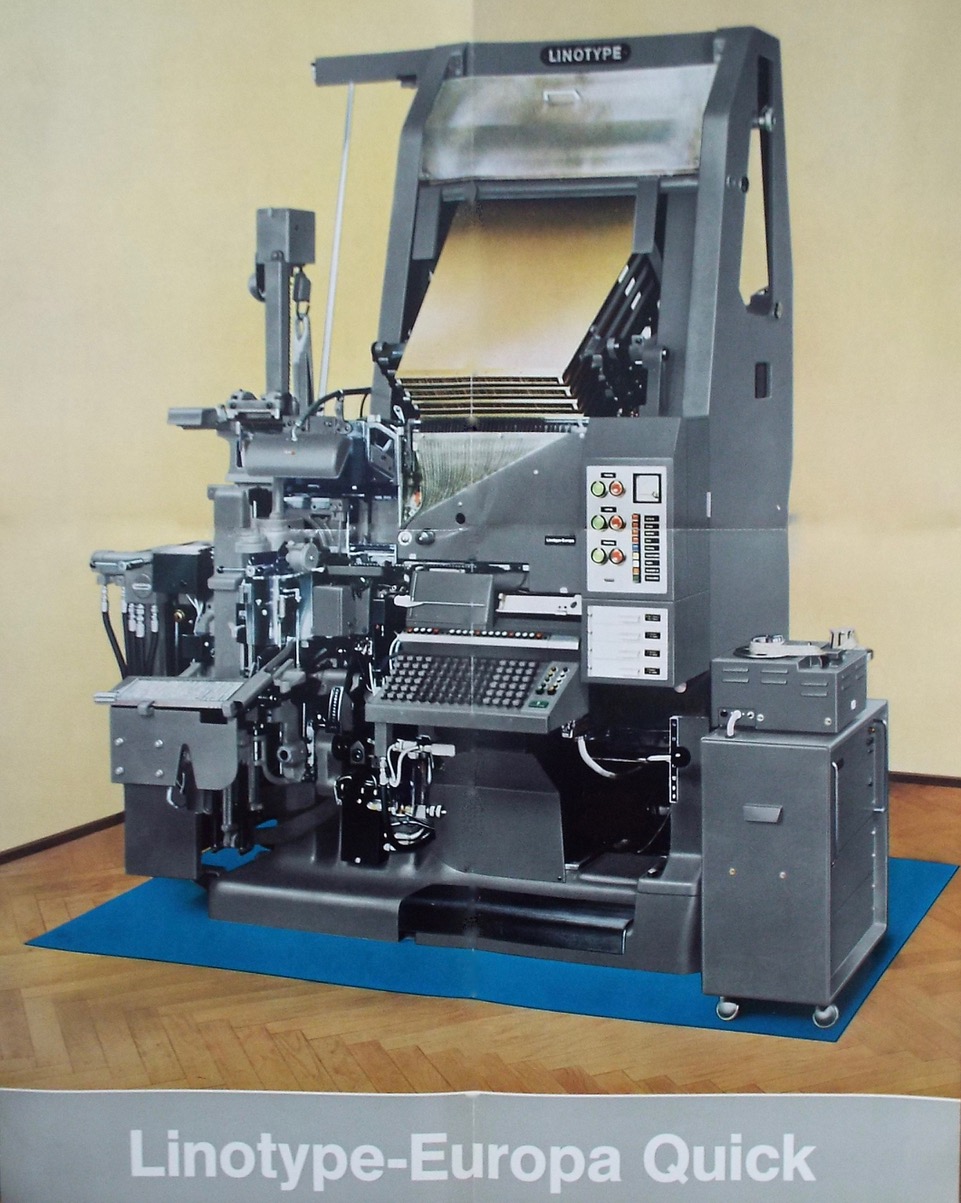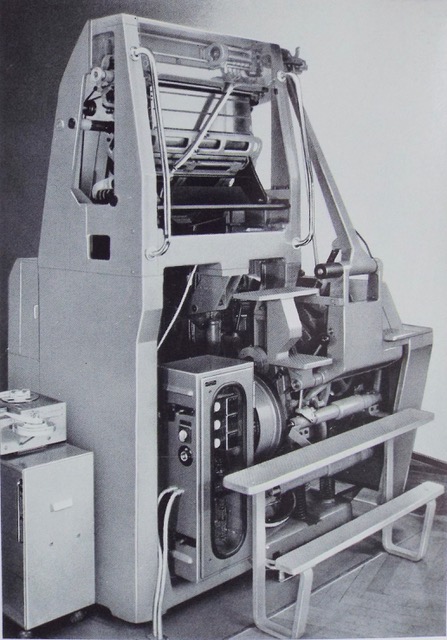
As regards the first-mentioned, it was a four-magazine mixer weighing-in at 2000kg equipped with four water-cooled 28 Cicero (30em) moulds, with provision for extension to 34 Cicero (36em) operation. Magazines were 90-channel configuration. Hydraquadder and Mohr saw could be had as extras and the remarks previously given regarding provision of these features applies again.

German Linotype described it as “the star machine for difficult composition tasks”, and who is to argue with that? Speed range was from 8 to 14 lines per minute, and it must be fascinating to watch such a machine in operation mixing from all four magazines on a continuous basis, for which there were five sets of distributor screws—although the top one, having performed its work fairly quickly, did not run the full width, as can be seen in the illustration showing the back of the machine, where it will be seen that the pie shute starts its descent only about a third of the way across the width of the magazines. Also of note in this picture are the free-standing lower steps which don’t look very secure (one hopes they were attached to the main frame by some means). The TTS operating unit is on the extreme left.
Europa G
Similar in many respects to its predecessor with one important difference—it could use a combination of 70-channel and 90-channel magazines in various combinations so that a comprehensive range of straight text and heading work could be produced at high-speed.
Normally linecasters setting 18pt and 24pt faces were equipped with 72-channel magazines, so the 70-channel configuration on this machine was unusual and may have been designed to widen some of the channels to accommodate full-width capitals such as M and W which may have been too wide for a 72-channel magazine: thus it was possible to accommodate such faces, as well as condensed faces up to 36pt. The keyboard automatically adjusted itself to react to which type of magazine was being used.
Also when running on tape the G was described as being fully automatic and able to alter which magazine was in use, change the mould wheel and the knifeblock settings—all features which would of course have been necessary when changing between, say, 6, 8 or 10pt text setting coupled with headings ranging from 16pt to 36pt. When running on tape it must have been a very exciting machine to see in action as it was doing all this stuff with no human intervention. No doubt the human monitor looking after several such machines all rattling away at 14 lines per minute would have been fully occupied in keeping them all in motion!